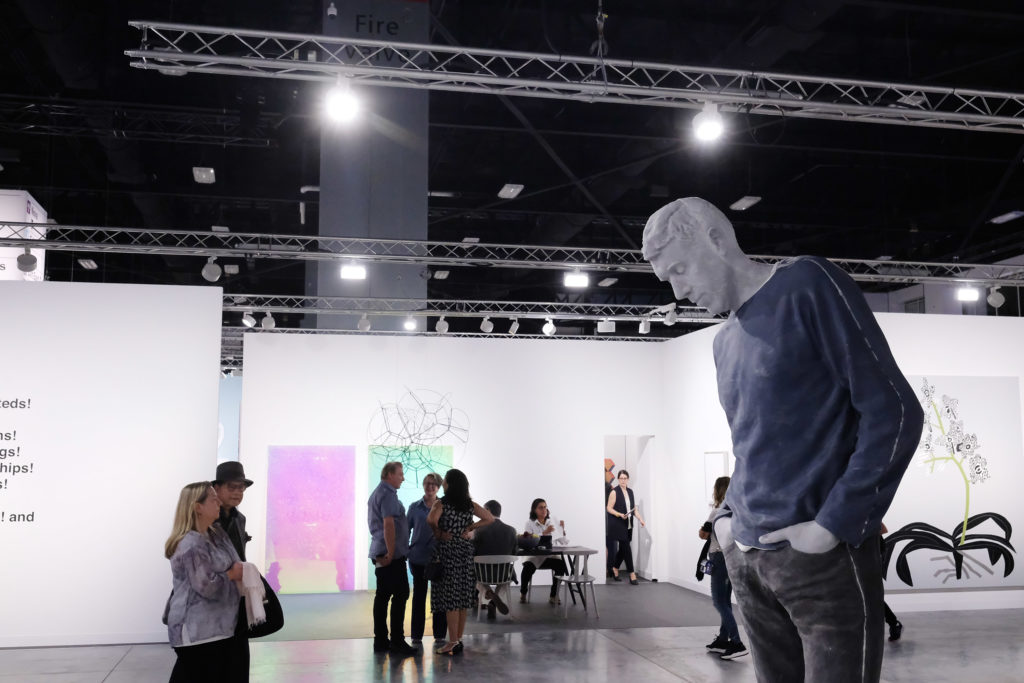Art World
Art Industry News: Trump’s Border Crackdown Reverberates at Art Basel Miami Beach + Other Stories
Plus, heirs sue the Thyssen Museum for Nazi-looted art and the king of Belgium skips out on the reopening of the Africa Museum.

Plus, heirs sue the Thyssen Museum for Nazi-looted art and the king of Belgium skips out on the reopening of the Africa Museum.

Artnet News

Art Industry News is a daily digest of the most consequential developments coming out of the art world and art market. Here’s what you need to know this Wednesday, December 5.
A New Biography Chronicles Philip Johnson’s Flirtation With Fascism – America’s most important architect of the 20th century was a fan of Hitler’s Germany in the 1930s. In a new biography The Man in the Glass House: Philip Johnson, Architect of the Modern Century, architecture critic Mark Lamster digs deep into the dark history of Johnson’s flirtation with fascism, which later became buried at the end of World War II. Not only was Johnson a devoted Hitler supporter, but he had attended Nazi Youth rallies in Germany in 1933. He also wrote in the early 1930s that he did not consider French Jews to be real Jews. After unpacking Johnson’s political leanings, Lamster draws aesthetic connections between them and the fascist architecture that influences some of his greatest feats. (Tablet)
North Carolina Is Reinstating a Confederate Monument, Sparking Protests – Officials at the University of North Carolina’s Chapel Hill campus are reinstating the toppled Confederate monument to Silent Sam at an estimated cost to the university of $5.3 million, plus $800,000 annually. Student protesters are rallying against the controversial decision, chanting “we have nothing to lose but our chains,” and calling for faculty to join them. A report from earlier this year revealed that nearly 50 confederate monuments have been removed around the country, though art historians and scholars have differing opinions on the subject. (Artforum)
Trump’s Border Clampdown Overshadows Miami Beach – As 15,000 US troops stand stationed at the US-Mexico border from now until December 15, Latin American galleries attending Art Basel Miami Beach and satellite fairs have had to reevaluate their business strategies, as shipping problems seem to be on the rise between the northern and southern North American hemispheres. José Kuri, co-founder of Mexico City’s Kurimanzutto gallery, and Chris Sharp from Lulu gallery are among those who have expressed their frustration at Trump’s policies. (The Art Newspaper)
Einstein’s “God Letter” Sells for $3 Million –The inventor’s famous hand-written letter that was written a year before he died and addressed to the religious philosopher Erik Gutkind in 1954 has fetched three times its high auction estimate. It was expected to sell for between for up to $1.5 million at Christie’s New York, but went for $2.9 million including the buyer’s premium. In the letter, Einstein calls religion a “childish superstition” born out of “human weakness.” (Daily Mail)
Mark Hamill Questions Legitimacy of Lightsaber Going to Auction – Star Wars actor Mark Hamill took to Twitter with the hashtag #BuyerBeware ahead of the auction of his lightsaber, which is expected to go for up to $200,000. “Be Advised,” Hamill tweeted. “There was no ONE lightsaber I used in the films, but many, MANY, both for myself & my stunt-double.” (BBC)
Heirs Sue the Thyssen Museum for Nazi-Looted Art – The Cassirer family is going after Madrid’s Museo Thyssen-Bornemisza for the painting Rue Saint-Honoré in the Afternoon, Effect of Rain by Camille Pissarro. Lilly Cassirer had sold the painting to the Nazis in 1939 to ensure safe passage for her family out of Germany, though in the end her sister was murdered in a concentration camp. The painting was sold at a Gestapo auction in Berlin during the war and, in 1948, the family filed a claim for the work in an Allied forces tribunal. It was thought to be lost and the family initially received a $13,000 payment, but that was before Cassirer’s granddaughter discovered it hanging in the Madrid museum in 2000. (Courthouse News)
Knight Foundation Invests $37 Million in Miami Arts Institutions – The $37 million investment brings the foundation’s funding of the art sector in Miami up to $165 million, with the extra money meant to further bolster the arts. It will help major art institutions including the Perez Art Museum Miami, the New World Symphony, and the Arsht Performing Arts Center to innovate and experiment with their programming. (Press release)
Ed Ruscha Gives a Cache of His Own Work and Collection to the Joslyn Museum – The US artist has gifted 18 works he made between 1961 and 2017 to the museum. He has also given it a collection of his original artist books, plus 20 additional works by other artists including Terry Allen, William Wegman, and Richard Artschwager. (Press release)
Ancient Stone Sculpture Abandoned on the Road to Kathmandu – A ninth–century cow sculpture has been placed unattended on a roadside in Thausacha, Bhaktapur, for the past three years because its previous home was demolished to make way for new buildings. The National Art Museum cited bureaucratic hurdles and damage from a 2015 earthquake as reasons that it hasn’t found a safe place for the sculpture. (Kathmandu Post)
Photographer Busts Samsung for False Advertising – Photographer Dunja Djudic has called out the mobile phone company for using her DSLR photo to advertise the camera on the Galaxy A8 Star in Malaysia. Djudic’s image (which the company licensed from a stock-photo site) was Photoshopped and now being used to promote the smartphone’s portrait mode capabilities on the website. (The Verge)
Alfredo Jaar’s Logo For America Floats Off Miami Beach – The artist’s 1987 video work A Logo for America is floating just offshore of Miami Beach for the inaugural edition of the Faena Festival, a satellite art event during Art Basel Miami Beach. See it here. (artnet News)